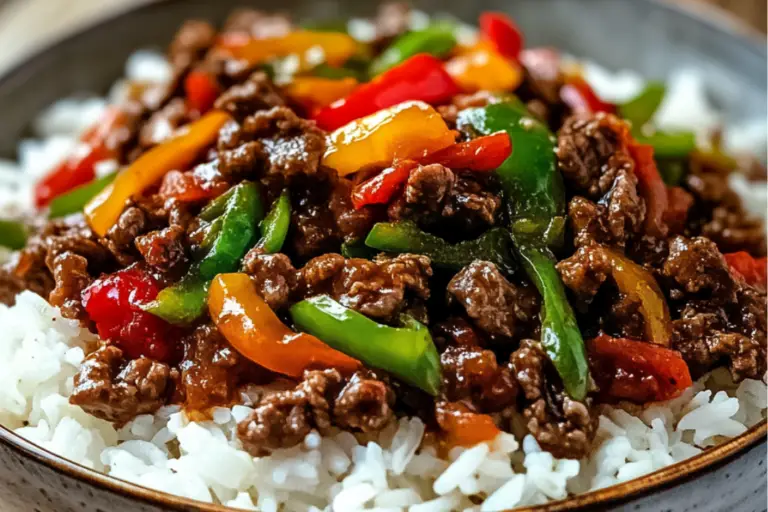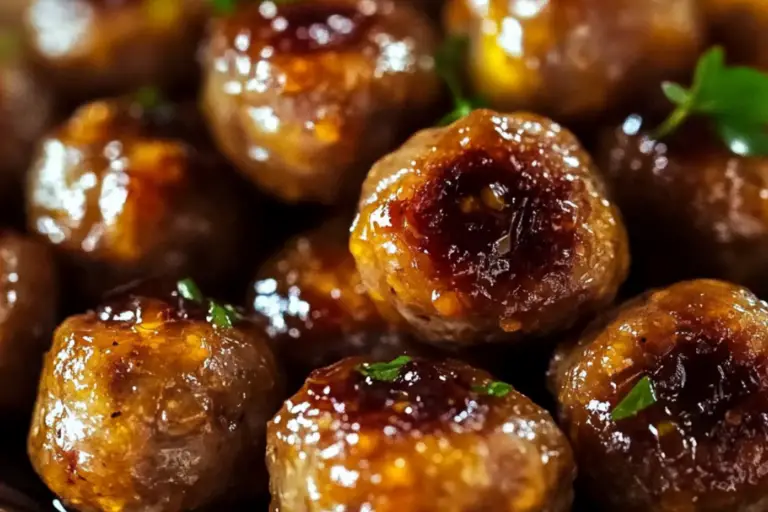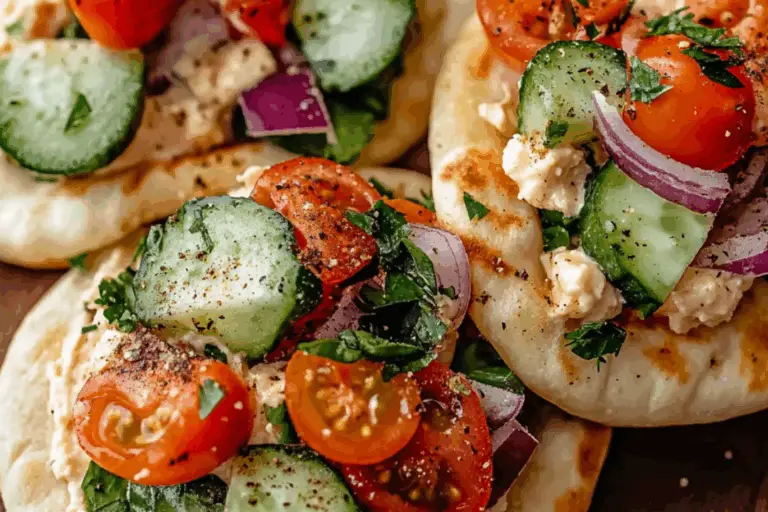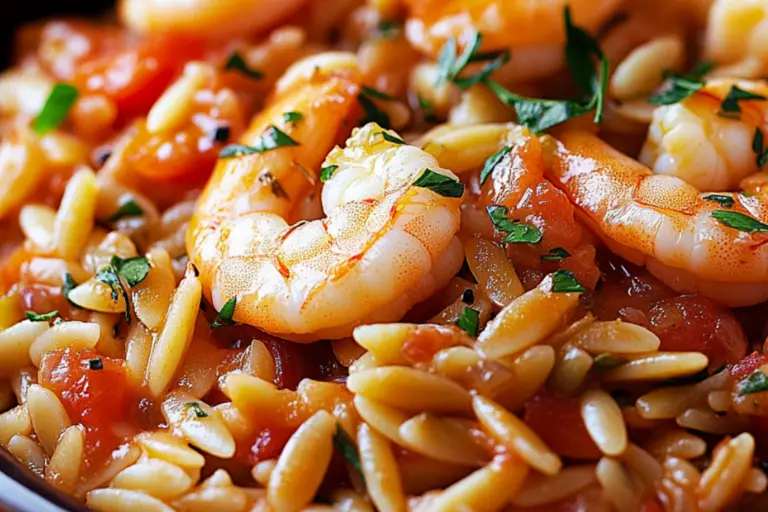Dill Pickle Boiled Peanuts
If you love pickles and crave something salty, tender, and bursting with tangy flavor, Dill Pickle Boiled Peanuts are the perfect snack to add to your culinary arsenal. This unique twist on the traditional Southern treat combines the unmistakable zest of dill pickles with the soft, comforting texture of boiled peanuts, creating an addictive snack that’s both satisfying and refreshingly different. Whether you’re looking for a game-day snack or a conversation starter at your next gathering, this recipe will not disappoint.
Why You’ll Love This Recipe
- Bold Flavor Fusion: Combines the tartness of dill pickles with the creamy, soft texture of boiled peanuts for a one-of-a-kind taste experience.
- Easy to Customize: Simple base recipe that lets you add your personal touch, from spiciness to herb infusions.
- Great for Snacking: Perfect as a handheld, mess-free treat that’s both satisfying and healthy.
- Comfort Food with a Twist: Offers a nostalgic Southern favorite with a refreshing pickle punch.
- Kid-Approved: Mild but flavorful enough to win over even picky eaters.
Ingredients You’ll Need
The ingredients for Dill Pickle Boiled Peanuts are refreshingly simple, balancing savory, tangy, and earthy notes while keeping the cooking process straightforward. Each element plays a crucial role in achieving that perfect bite—whether it’s the peanuts’ texture or the pickle brine’s acidity.
- Raw Peanuts: The foundation of the dish, offering a tender but chewy texture after boiling.
- Dill Pickle Brine: The key flavor booster, infusing that irresistible tang directly into the peanuts.
- Fresh Dill: Adds a bright herbaceous note that complements the pickle flavor perfectly.
- Garlic Cloves: Enhances depth with subtle pungency.
- Salt: Balances and amplifies flavors, ensuring the peanuts don’t taste bland.
- Water: Needed for boiling and blending all flavors harmoniously.
- Optional Spices: Such as black pepper or red pepper flakes for an extra kick.
Variations for Dill Pickle Boiled Peanuts
This recipe is incredibly adaptable, allowing you to tailor it to your taste buds or dietary needs. Experimenting with variations can make each batch exciting and personalized. Here are some ideas to inspire your creativity.
- Spicy Dill Pickle Peanuts: Add cayenne or chili flakes during boiling for a fiery twist.
- Vegan-Friendly: Ensure your pickle brine is free of any animal-derived ingredients and swap fresh dill for other herbs like chives or basil.
- Garlic Lovers’ Version: Increase garlic quantity or add garlic powder for a more intense garlicky aroma.
- Lemon Dill Boost: A squeeze of fresh lemon juice enhances brightness alongside the dill.
- Sweet and Tart: Mix in a small amount of honey or maple syrup to balance acidity with a subtle sweetness.

Disclosure: This post contains affiliate links.If you click and make a purchase, I may earn a small commission at no extra cost to you.
How to Make Dill Pickle Boiled Peanuts
Step 1: Prepare the Peanuts
Start by rinsing raw peanuts under cold water to remove any debris or dirt. This ensures a clean, fresh base for soaking up all the dill pickle flavor.
Step 2: Mix the Brine
Combine water, dill pickle brine, salt, fresh dill sprigs, and garlic cloves in a large pot. Adjust volume depending on your batch size, ensuring there’s enough liquid to submerge the peanuts fully.
Step 3: Boil the Peanuts
Add the peanuts to the pot and bring the mixture to a boil. Once boiling, reduce the heat to maintain a gentle simmer. Cover loosely and let the peanuts cook for 2 to 3 hours, stirring occasionally to avoid sticking and to allow flavors to seep in thoroughly.
Step 4: Test for Tenderness
After about two hours, sample a peanut every 20 minutes until they reach a tender, almost soft texture but still with a slight bite. Some prefer them softer, so cook longer if desired.
Step 5: Cool and Store
Once cooked, strain the peanuts and let them cool in the brine to soak up more flavor. You can serve warm or refrigerate for later.
Pro Tips for Making Dill Pickle Boiled Peanuts
- Use Fresh Peanuts: Raw, green peanuts yield the best texture and flavor.
- Don’t Skimp on Brine: The pickle brine is your primary flavor source, so use high-quality, flavorful brine.
- Simmer Without Lid: Leaving the pot slightly uncovered prevents the liquid from boiling over and concentrates the flavor.
- Stir Occasionally: Keeps peanuts evenly cooking and prevents sticking to the pot bottom.
- Adjust Salt Gradually: Taste the brine before boiling to avoid over-salting.
How to Serve Dill Pickle Boiled Peanuts
Garnishes
Top your peanuts with chopped fresh dill or sliced green onions to enhance freshness and add a pop of color that excites the eye and palate alike.
Side Dishes
Dill Pickle Boiled Peanuts pair wonderfully with cold beers, fresh veggie platters, or as a side snack to sandwiches and burgers for a fun, tangy contrast.
Creative Ways to Present
Serve them in rustic bowls or mini buckets lined with parchment paper for casual gatherings, or sprinkle a bit of smoked paprika on top for an eye-catching flair.
Make Ahead and Storage
Storing Leftovers
Keep leftover Dill Pickle Boiled Peanuts in an airtight container in the refrigerator submerged in their brine to maintain moisture and flavor up to one week.
Freezing
For longer storage, freeze peanuts in their brine inside freezer-safe bags or containers. When ready to eat, thaw overnight in the fridge.
Reheating
Gently reheat by steaming or microwaving the peanuts while covered to keep them moist, or warm them briefly in the brine on the stovetop.
FAQs
What type of peanuts should I use?
Use raw, green peanuts for the best texture and flavor; these are often available in Southern markets or specialty stores.
Can I use regular pickle juice instead of dill pickle brine?
Pickle brine specifically refers to the seasoned liquid from dill pickles; regular pickle juice might work but dill pickle brine is preferred for that signature tang.
How long do Dill Pickle Boiled Peanuts last?
When refrigerated in brine, they last about one week; freezing can extend shelf life up to three months.
Are Dill Pickle Boiled Peanuts spicy?
The standard recipe is mildly tangy and not spicy, but you can easily add heat with red pepper flakes or cayenne.
Can this recipe be made without salt?
Salt is essential for flavor balancing, but you can reduce it for lower-sodium diets—the peanuts may taste less vibrant.
Final Thoughts
If you’re searching for a snack that’s irresistibly tangy, easy to prepare, and delightfully different, Dill Pickle Boiled Peanuts are the way to go. This comforting yet refreshing treat will quickly become a fan favorite, blending Southern charm with vibrant pickle power. Grab your ingredients, try this recipe, and get ready to enjoy the delicious crunch of something truly special.
Related Posts
- Cheesy Garlic Parmesan Chicken Pasta Skillet Recipe
- John Wayne Casserole Classic Comfort Food Recipe
- Creamy Lemon Chicken Made Easy and Delicious
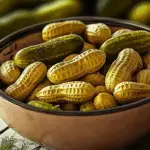
Dill Pickle Boiled Peanuts
- Prep Time: 15 minutes
- Cook Time: 2 to 3 hours
- Total Time: 2 hours 15 minutes to 3 hours 15 minutes
- Yield: 6 servings 1x
- Category: Appetizers
- Method: Boiling
- Cuisine: Southern / American
- Diet: Vegetarian, Vegan (if pickle brine is vegan)
Description
Dill Pickle Boiled Peanuts combine the tangy zest of dill pickle brine with tender, soft boiled peanuts for a unique and addictive snack. This Southern-inspired treat is easy to prepare, customizable with spices or herbs, and perfect for game days or casual gatherings, offering a flavorful twist on classic boiled peanuts.
Ingredients
Main Ingredients
- 2 pounds raw peanuts
- 4 cups water
- 2 cups dill pickle brine
- 3 fresh dill sprigs
- 4 garlic cloves, peeled
- 1 tablespoon salt
Optional Spices
- 1 teaspoon black pepper or red pepper flakes (optional for heat)
- 1/2 teaspoon cayenne pepper (optional for spicy version)
- 1 teaspoon honey or maple syrup (optional for sweet and tart variation)
- Juice of 1/2 lemon (optional for lemon dill boost)
Instructions
- Prepare the Peanuts: Rinse the raw peanuts thoroughly under cold water to remove any dirt or debris, ensuring a clean base for soaking up the dill pickle flavors.
- Mix the Brine: In a large pot, combine water, dill pickle brine, salt, fresh dill sprigs, and garlic cloves. Adjust the liquid volume as needed to fully submerge the peanuts.
- Boil the Peanuts: Add the rinsed peanuts to the pot. Bring the mixture to a boil, then reduce heat to maintain a gentle simmer. Cover the pot loosely and cook for 2 to 3 hours, stirring occasionally to prevent sticking and help the flavors infuse evenly.
- Test for Tenderness: After about 2 hours, start testing peanuts every 20 minutes by sampling one. Cook until peanuts are tender and soft with a slight bite, adjusting cooking time based on your preference.
- Cool and Store: Strain the cooked peanuts and let them cool in the brine to absorb more flavor. Serve warm or refrigerate for later use.
Notes
- Use fresh, raw (green) peanuts for the best texture and flavor.
- Choose a high-quality dill pickle brine for a robust tangy taste.
- Simmer with the pot slightly uncovered to prevent boil-overs and concentrate flavor.
- Stir occasionally during cooking to avoid peanuts sticking to the pot bottom.
- Taste the brine before cooking and adjust salt to prevent over-seasoning.
- Leftover peanuts keep well refrigerated in brine up to 1 week or can be frozen for up to 3 months.
- Reheat gently by steaming, microwaving covered, or warming in brine on the stovetop.
Nutrition
- Serving Size: 1/2 cup
- Calories: 180
- Sugar: 1g
- Sodium: 450mg
- Fat: 12g
- Saturated Fat: 2g
- Unsaturated Fat: 8g
- Trans Fat: 0g
- Carbohydrates: 12g
- Fiber: 3g
- Protein: 8g
- Cholesterol: 0mg





